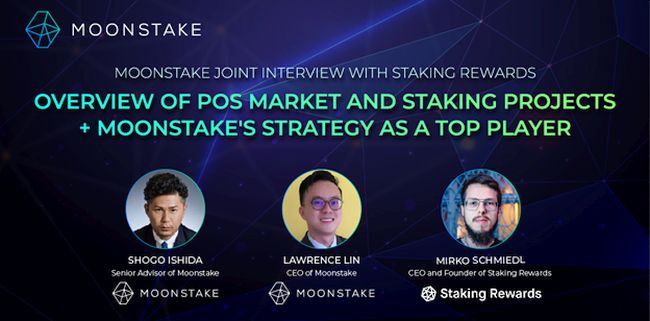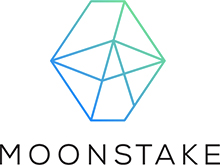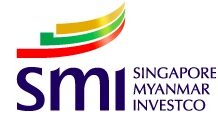To celebrate our first anniversary this April, Moonstake held a joint Q&A with Staking Rewards, the first and most trusted resource hub for staking and yield-bearing assets data.
This interview provides many valuable insights into the current state as well as the future outlook of the Proof-of-Stake market and information about Moonstake, a top-ranking staking provider on Staking Rewards.

Here, the Senior Advisor of Moonstake, Shogo Ishida, serves as the moderator. Answering the questions are Mirko Schmiedl, the CEO and Founder of Staking Rewards, and Lawrence Lin, the CEO of Moonstake. Here’s the full transcript of the interview.
Shogo: What should I watch out for in 2021 to stay on top of one of the hottest trends in staking?
Mirko: 2021 will be a year with a lot of noise. Thus even more important to pick the right news sources and content to stay on top of trends. Already seeing a lot of projects without any substance popping up everywhere. I would try to listen to people with proven track-record only. And refer to news sources that are trusted and work professionally. At Stakingrewards.com we thrive to provide a pre-vetted and independent overview of the entire staking market.
Shogo: What can we expect to see in the Proof-of-Stake market in 2021 and how to stay on top of all the hottest trends in staking?
Mirko: One of the biggest trends in 2021 is definitely staking derivatives. With the launch of Ethereum 2,0 in December last year, we have seen many solutions being developed which offer liquid staking products that can be traded on the secondary market. This trend is emerging into the multichain nature which is another big trend for 2021. There are more and more bridges and it is now possible to move wrapped staked assets across chains. Lido Finance, Stafi Protocol, and Anchor Protocol are great examples.
Shogo: What are the biggest adoption barriers for Proof-of-Stake and Staking right now and how should we solve them?
Mirko: One of the biggest barriers is still the ease of use. There are not many solutions that provide a simple user interface for multiple crypto assets. Especially across chains there needs to be more easy tooling to hold, store, and stake many assets in one interface. Another adoption barrier is the unclarity for tax treatment. I see many people hold off staking as they are afraid of the legal treatment. From the Protocol Research perspective I think we have mainly achieved consensus, that Proof-of-Stake is the go-to group of algorithms which will dominate the market besides Bitcoin. We made it! Governance is a topic that still needs a lot of attention. We are still in the very early days for that. It will be a big challenge, once networks become more decentralized. As of now this is still a long path until we will face the real challenges. Most projects are still highly centralized and the decision making process is achieved fast.
Shogo: Ethereum, the world’s #2 biggest blockchain, which originally a Proof-of-Work blockchain, has begun its development to switch to Proof-of-Stake network at the end of last year. How do you think this will impact the future of the staking market going forward?
Mirko: The launch of Ethereum 2.0 was a massive milestone for the overall blockchain space. It marked the beginning of a whole new era. Ethereum sets trends and drives innovation. Their unique approach which fosters grass roots participation and decentralization makes the network more resilient and I hope other protocols will be inspired and can learn from them. Ethereum in my view combined the Proof-of-Stake design of Early Stage projects like Peercoin, NXT, Reddcoin, etc with the later stage projects like Tezos, Cosmos, EOS. Ethereum took the best of both worlds and is also strong in layer 2 tooling, like development of sacred shared validator keys, staking derivatives etc.
Shogo: What makes a staking network unique amongst others on the market?
Mirko: A good staking network needs to have long-term aligned incentives, great security module, active governance participation, ease-to-use, accessible for everyone, low minimums, shorter lock-ups times, good tooling, great wallets, rich set of high-profile validators, rich set of grass roots validators, community engagement, good API/data access, great block explorer, simple economic design that is easy to understand, solving liquidity issues, also having raised less money is mainly a good thing for projects. That’s just to name a few points I consider extremely important for a project to stand out. You can see that all of the top-ranking staking projects are being adopted and supported by the high-profile staking providers such as Moonstake. On Staking Rewards you can find interesting patterns between the quality assets and providers.
Shogo: Recently, Moonstake has formed alliances with various blockchain projects like Centrality, Polkadot, Orbs. How does Moonstake decide on which Proof-of-Stake coin to support?
Lawrence: If you look at Moonstake’s lineup of supported assets, you can probably see the strategy behind our decision. That is, we focus on the demand of the market for that coin, how popular it is, and how large its staking volume is. And of course, we’re always open for deeper collaboration opportunities, so we also look at how the project’s vision and roadmap goals can align with our own to widen our scope of collaboration.
Shogo: Stakingrewards.com provides rankings for staking providers, DeFi platforms, exchanges, and wallets. What are some key things that the top platforms in each category have in common?
Mirko: Good and successful staking providers are amongst the best research boutiques in the industry. They choose wisely which networks to validate, thus the networks they choose are likely to have good long-term incentives in place. This makes these coins highly demanded by the community and therefore worth supporting, which I believe, like what Lawrence just said, is a strategy Moonstake is currently adopting.
DeFi platforms have to be innovative or fill a no-brainer market gap (e.g. Pancakeswap as “Uniswap on BSC”) in order to succeed. The successful platforms are driving innovation and development, while having great incentives for the community. Giving away more than 50% of tokens to the community via farming in order to bootstrap the network is more of a necessity these days.
Successful exchanges are easy-to-use, and list good projects. Again it’s important for exchanges to have a strong research arm and be close to innovation. Staking features and campaigns are becoming more and more a differentiating factor.
Shogo: Moonstake became one of the top 10 staking providers within 1 year. What was the strategy to accomplish this as a staking wallet solution for users and businesses?
Lawrence: Indeed, 2020 was an incredible first year for Moonstake. We achieved over $900 Million in staked assets and earned the trust of investors and businesses worldwide with our staking wallet as well as staking-as-a-service solutions. In just one year, we’ve become one of the top 10 biggest staking providers in the world. This is thanks to our strategy of only collaborating with the most esteemed institutions, projects, and custodians on the market while also taking active part in promoting global awareness of blockchain and staking in various educational initiatives, bringing the world of cryptocurrency and decentralized technologies to a wider audience of consumers and businesses. And with the recent launch of Muse.Finance, the Moonstake ecosystem will continue to grow from 2021 onwards, especially in the frontier of DeFi, and help accelerate the connection from staking to DeFi.
Moonstake has been proudly featured in the top 10 rankings of global staking providers on Staking Rewards since February this year. We were thrilled to have a joint interview with them and hope for potential collaboration opportunities in the future.
About Moonstake
Moonstake was recently established to develop a staking pool protocol to satisfy increasing demands in regional and global blockchain markets. Moonstake develops a staking pool protocol and provides business services through partners and companies.
Moonstake aims to be the largest staking pool network in Asia by providing an active environment for crypto asset holders. Establishing a clear partnership roadmap with Moonstake represents another significant milestone for continuing to strengthen ties with leading platforms across Asia’s burgeoning Distributed Ledger Technology (DLT) ecosystem. Partnership has been announced with Emurgo, Ontology and NEO to boost staking adoption, Binarystar, Japan’s biggest blockchain hub, OIO Holdings Limited (SGX: OIO), a Singapore-listed company. Industry’s reputed advisors, such as Lisk and Lawrence Lim of RAMP DEFI support Moonstake’s innovative journey.
With a full-scale operation launched in August 2020, we expanded our business and as of now, our total staking assets exceeded over USD 900 Million. https://www.moonstake.io/
About Staking Rewards
Staking Rewards is a platform of open-concourse, that provides data and guidance to minimize the risk when investing in the countless opportunities to earn passive income with cryptocurrencies. The team is curating knowledge and data to build a healthy staking and defi ecosystem. Staking Rewards is committed to lowering the access barrier to staking opportunities by presenting, comparing and benchmarking all the (Staking) Providers, who are dedicated to providing infrastructure, security, expertise and sometimes even custody or insurance for the staking assets. https://www.stakingrewards.com/
















